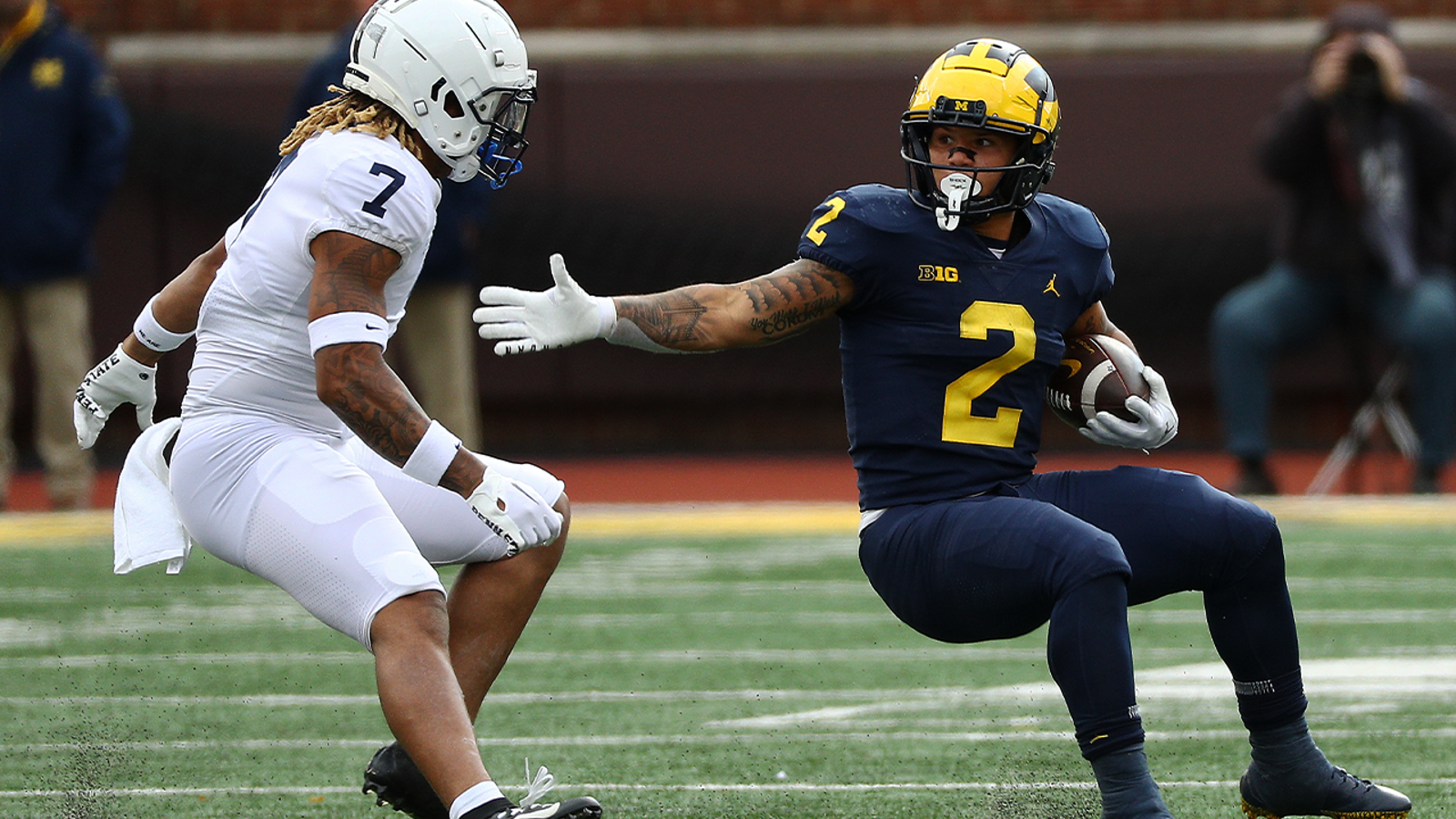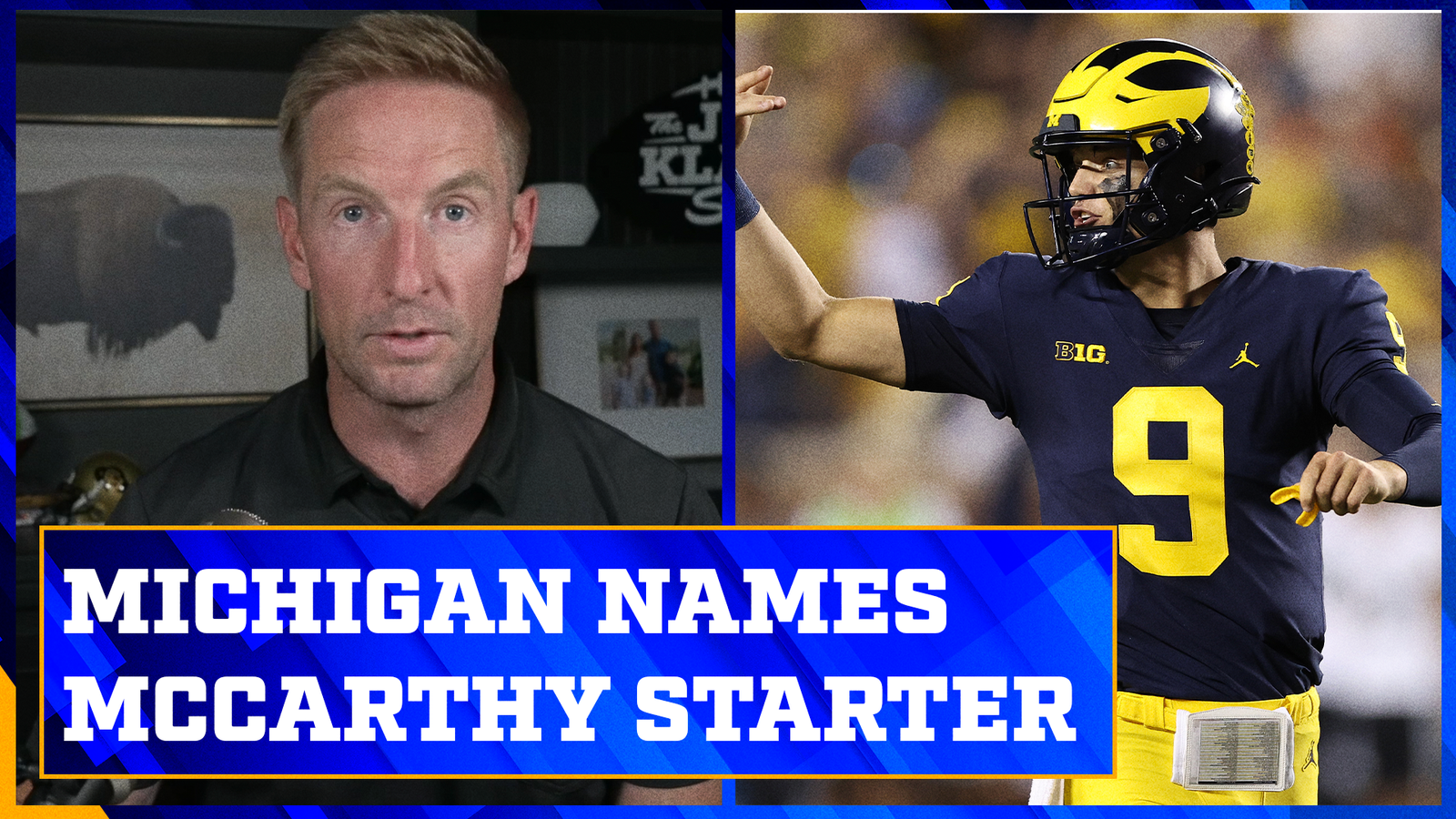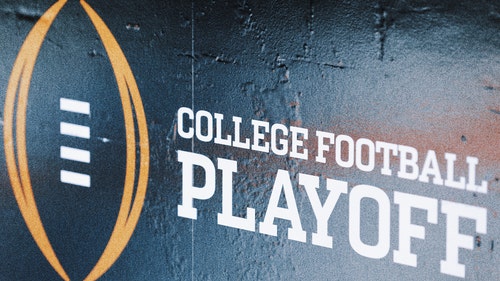
Why Penn State hasn't handed the reins to 5-star QB Drew Allar
By Michael Cohen
FOX Sports College Football Writer
In the fourth quarter of Saturday’s loss to Michigan, after he was knocked from the game with an undisclosed injury, Penn State quarterback Sean Clifford distanced himself from everyone on the Nittany Lions’ sideline. The sixth-year senior with more than 9,000 yards of total offense stood alone at the end of the bench, sans helmet because his day was through, and watched the backup lead two fruitless drives in a 41-17 defeat.
Across the field, Michigan’s version of Clifford — Cade McNamara — spent the game in a sweatsuit while his recovery from an unspecified leg injury continues. It was McNamara who guided the Wolverines to a win over Ohio State and helped secure the school's first Big Ten Championship since 2004 during his only season as the starting quarterback. He played a central role in the program’s restoration by coupling strong leadership with stronger in-game decision-making and advanced Michigan to the College Football Playoff for the first time.
Yet McNamara’s stint atop the depth chart was defined as much by unrelenting questions about his job security as anything he did on the field, where flash and pizzazz were trumped by his unwavering desire to protect the football and ensure the Wolverines dominated time of possession. The quarterback behind him — the same one who eventually usurped McNamara’s position two weeks into the 2022 campaign — was former five-star recruit J.J. McCarthy, an uber-talented but unproven freshman whose potential was deified by corners of the fan base to mythical, totemic proportions. Whatever McNamara’s ceiling was, fans were certain McCarthy could exceed it.
Highlights: Penn State vs. Michigan
Now it’s Clifford’s turn in the pressure chamber following a desultory performance against Michigan (7-of-19 for 120 yards and no touchdowns) that sunk the Nittany Lions to 74th in passing offense at 235.3 yards per game and left them tied for 106th in completions longer than 30 yards, with six. The chorus of Penn State fans yearning for their own five-star freshman, Drew Allar, to supplant a good-not-great upperclassman like Clifford is nearing its crescendo. And now that PSU no longer controls its own destiny in the Big Ten East, head coach James Franklin will continue to face questions about a potential quarterback change regardless of whether he’s actually considering one.
"That’s the wrong message, that’s the wrong signal," Franklin said in his weekly news conference when asked for a response to fans wanting Allar to start. "And Sean has earned the right to be on the field. That doesn’t mean that Drew hasn’t done some good things. We’d love to get him an opportunity and continue to grow him and continue to develop him for his future, no doubt about it.
"In 2016, we lost to Michigan and played Minnesota the following week and found a way to get that win, and the rest of the season went pretty well. So I think there are tons of examples — not only at Penn State but across the country — where you do everything you possibly can to win the next week. I think some of those approaches (such as pivoting to a younger quarterback) aren’t necessarily about winning this week."
While Franklin’s approach might be unpopular with fans, his rhetoric echoes the explanations offered by Michigan’s coaching staff following some of McNamara’s underwhelming performances last season. The party line from head coach Jim Harbaugh and his assistants was that an experienced, risk-averse player like McNamara gave the run-heavy Wolverines a better chance to win than McCarthy, the No. 5 quarterback in the 2021 recruiting cycle whose dynamism was sprinkled in for 11.6 snaps per game against Big Ten opponents.
It wasn’t until this past August that co-offensive coordinator/quarterbacks coach Matt Weiss explained the three-pronged rationale behind Michigan’s deployment of McCarthy last season.
First prong: The primary focus, Weiss said, was to play McCarthy as often as possible for the sake of developing a reliable backup, someone who could spell a potentially injured McNamara without handcuffing the offense. McCarthy played 43 combined snaps in early blowouts of Western Michigan and Northern Illinois before his reps diminished in Big Ten play, though he finished the year with 11 appearances in 14 games. His total of 60 snaps through the first seven weeks of last season is virtually even with Allar’s tally of 64 snaps entering Saturday’s game against Minnesota. "You don’t want to be in a position where the first time you need him is on the road in a close game against a ranked opponent," Weiss said, "and the guy has never taken a snap."
Second prong: For quarterbacks transitioning from high school to college, where the complexity of the game intensifies, learning to read defenses at the line of scrimmage is among the most difficult tasks. To combat this, Weiss said the Wolverines wanted to establish McCarthy as a run threat early in the Big Ten schedule to influence what opponents might do. McCarthy carried the ball eight times for 53 yards and a touchdown in his first three conference games while only attempting seven passes during that stretch. "If you’re running a lot of quarterback runs," Weiss said, "the (defenses) are not going to be running four-to-a-side blitzes and showing him all different types of coverages. They’re going to make sure they have everything gapped out, and they’re going to be more static. So that made things easier for him, right? He didn’t have to go out on third-and-15, there’s some crazy blitz coming and (he has to) figure that out. We were able to control when he was in the game and what he was doing and helped him have success."
Third prong: The final kernel of logic was an extension of Michigan’s plan to capitalize on McCarthy’s mobility. For everything McNamara did well in 2021 — from avoiding turnovers to producing scoring drives at a high rate; from exuding poise and leadership to selflessly executing a run-first offense — he had neither the speed nor agility to worry defensive coordinators. Part of the reason Michigan insisted on creating packages for McCarthy was because he brought a different element to the offense and finished with 27 carries for 124 yards and two touchdowns on the season. "The best quarterback is going to play," Weiss said. "It’s true at any position. But then if there’s something that we can do, if somebody adds an element that we don’t have, we’re going to use that person."
Why J.J. McCarthy won Michigan's starting QB job
The last two prongs form something of a crossroads that differentiates last year’s situation at Michigan from what is currently unfolding at Penn State, where earlier this week Franklin told reporters, "Nothing has changed with the plan or the model at this stage," in reference to the quarterback depth chart.
The 6-foot-5, 238-pound Allar threw for 4,444 and 48 touchdowns in his final season at Medina High School in Medina, Ohio, with a statuesque frame not unlike that of former No. 1 overall NFL Draft pick Peyton Manning, who measured 6-foot-5 and 230 pounds at the scouting combine. That Allar ran for 406 yards and nine touchdowns as a senior reflects far better mobility than Manning, but even Franklin drew a line between his youngster and someone like Trace McSorley, one of the school’s best dual-threat quarterbacks in recent memory. (McSorley threw for more than 9,000 yards and rushed for 1,697 yards while scoring 107 total touchdowns from 2015-18.)
"He ain’t Trace McSorley," Franklin said after Allar carried five times for 11 yards in a win over Ohio earlier this year. "But he does enough to keep people honest in the quarterback run game off the zone reads and stuff."
The problem for Allar, who’s carried three times for minus-9 yards in his last two appearances, is that Clifford already keeps opposing defenses honest with a run threat of his own. Clifford finished as Penn State’s leading rusher in the loss to Michigan thanks largely to a 62-yard burst that set up a touchdown in the second quarter. He’s rushed for 1,041 yards and 14 scores across four seasons as Franklin’s starting quarterback, including 10 games with at least 50 yards and a career-high of 119 yards against Indiana in 2020.
Even those numbers, which fall well short of McSorley’s lofty standards, are unlikely to be matched by Allar if or when he’s given the keys.
"I don’t think he moves great," said a defensive coach whose team played Penn State this season. "I think possibly down the road the talent comparison is probably viable, of him becoming a bigger-time player than Clifford. I think they were so comfortable trying to have a quarterback that can escape and keep plays alive, and I just don’t think he’s that. One of our goals was to knock Clifford out of the game and get that kid in there because we thought he’d be more of a sitting duck as far as pass rush is concerned."
Sean Clifford rips off a 62-yard run
Without the kind of appreciably different skill set that got McCarthy into games as a true freshman, Allar’s clearest path to replacing Clifford is likely to establish himself as a higher-level downfield passer. Clifford has completed just four of 18 passes traveling at least 20 yards downfield this season, a 22.2% completion rate that ranks 104th nationally among players with at least the same number of attempts, according to Pro Football Focus. He’s only completing 50% of his throws that travel between 10 and 19 yards downfield (19-for-38) with three touchdowns and two interceptions. Clifford's NFL passer rating of 82.8 on intermediate throws ranks 58th overall and sixth in the Big Ten.
Allar has flashed more of an eagerness to push the ball downfield in his limited playing time, with 17 completions totaling 200 yards and two scores. His average depth of target is 11.5 yards per throw compared to 8.9 yards for Clifford, which is tied for 72nd nationally. Nearly 52% of Allar's passes have traveled at least 10 yards downfield to just 35.9% for Clifford. Allar's arm strength and confidence in his throwing ability are easy to see on film.
But none of that matters unless Franklin fancies a change, unless he’s ready to make the kind of move Harbaugh resisted when McNamara was steering the ship competently, if unspectacularly, last season. And until Franklin reaches that point, the offense still belongs to Clifford.
"Him and Cade is an interesting comparison," the defensive coach said. "He probably moves a little better (than McNamara), but just kind of what they are and what they are for their team, it’s probably pretty accurate."
Read more:
- Big Ten football: Illinois, Wisconsin and unease in the West
- Big Ten Power Rankings: Can anyone catch Michigan, Ohio State?
- How UCLA, Oregon built themselves into Pac-12 contenders
- Texas vs. Oklahoma State: Storylines for key Big 12 showdown
- RJ Young's Top 25: Michigan, Tennessee on the rise
Michael Cohen covers college football and basketball for FOX Sports with an emphasis on the Big Ten. Follow him on Twitter at @Michael_Cohen13.












